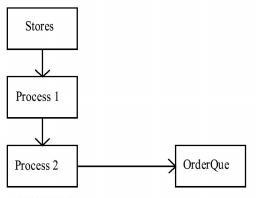
You are here: Building the Model: Advanced Elements > Modeling Tips > Creating Pull Systems > Types of Pull Systems
A pull system is a system in which locations produce parts only on downstream demand. There are two types of pull systems:
• those based on limited buffer or queue sizes.
• those based on more distant "downstream" demand.
The first method, that of limited buffer sizes, is quite easily to model using ProModel. By simply defining limited capacity locations, a preceding location will not send parts until capacity is available. This method works fine for most pull systems. The second method, triggering part movement, based on more distant downstream demand requires use of the SEND statement to trigger part movement.
There are additional ways to model pull systems using ProModel. As you review the modeling requirements of your own pull system, you should verify that these constructs will satisfy your needs.
This section shows how to use the SEND statement to model a pull system. The diagram below shows the pull system we will model. Orders for finished goods arrive at the OrderQue. The arriving order triggers the release of a unit from the location Stores. The order continues to wait at OrderQue until the unit goes through Processes 1 and 2. At Process_1, Unit processes for two minutes. At Process_2, Unit processes for four minutes. Finally, the Unit joins to the requesting order waiting in the OrderQue.
